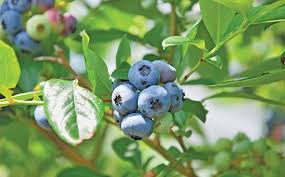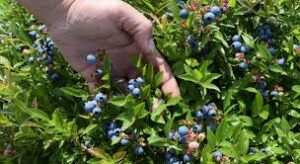HOW TO START A BERRY FARMING OPERATION NOW?



WHY GROW BERRIES?:
Berries are a high-value, nutrient – dense crop. Farmers grow them for the market to bring in extra cash. Berries are the cherished fruit of every farm, and once planted, they often produce for seasons to come. Find out which berry types will give you instant gratification and which are easy to care for.
BLACKBERRIES
They are easy to grow once you get the hang of the pruning routine, and the large, juicy berries will yield their first harvest in the second summer. Although they are delicious, they are farther down on the popularity ranking and fewer farmers are growing them.
Be aware that raspberries, strawberries, blueberries and blackberries are all perennial fruits.. This means that you only get one chance to set up their site properly. You should plant them 2 1/2 feet apart in rows. Clear the planting area of weeds and work in compost and other spoil amendments before planting. Spring and fall are the best times to plant perennials.
BLUEBERRIES
Blueberry shrubs are slow-growing and usually take about three years to begin bearing fruit. If you’re busy setting up a new farm, this is one crop that you can plant right away and then get on with other tasks while they get established.
For the best harvest, choose a site that is in full sun. Blueberries will enjoy a north – facing slope or the north side of a building in order to prevent damage from late- spring frosts, and it’s essential that the site be well-drained. Blueberries have specific soil needs. The pH must be between 4.5 and 5.0, and the soil must be amended if it doesn’t meet this requirement. They grow well on slopes or in raised beds where drainage is ideal. Plant them either in spring or fall, spaced about 4 feet apart.
STRAWBERRIES
Strawberry plants will produce a heavy yield in the late spring of their second year. June – bearing strawberries should be planted in full sun for the maximum yield. They like rich, loose soil that drains well. For this reason, they are often planted on slopes or in raised beds. Plant them in the early spring, after the soil had dried a bit, spaced 12 inches apart.
In the first year, remove runners and flowers, in order to encourage the plants to put energy into developing strong root systems. Keep plants well-watered in the first year.
GROUND CHERRIES
Ground Cherries or husk cherries, strawberry tomatoes, or husk tomatoes- are an annual in the nightshade family that will produce heavy harvests like other nightshade vegetables, such as tomatoes. They’re golden, tart – sweet berries with a strawberry pineapple- like flavor. They are reminiscent of cherry tomatoes except that they grow inside a paper – like husk. They can be eaten fresh and are popularly used to make jams, preserves, baked goods or salsa. Unfortunately, because they’re frost sensitive they’ll need to be replanted each year.
Try “Aunt Molly’s”, a heritage variety from Poland known to be prolific and super sweet. Practice good crop rotation, as ground cherries are susceptible to many of the same diseases as other nightshades.
RASPBERRIES
Raspberries are one of the most popular berries to grow, and some varieties produce two crops – one in spring and another in fall. This type is called ever bearing or full-bearing. Ever-bearing raspberries that are planted in the spring will usually produce a harvest in the fall of the first year. No waiting – outside of the usual growing season, that is!
Raspberries are self- pollinating, so you can grow a single plant or a whole stem of them. Site your raspberries in full sun spaced 2 feet apart in rows with good drainage. They’ll enjoy a north – facing slope or the north side of a building in order to protect them from late-spring frosts. Keep the plants well-watered in their first year, and use a trellis system to keep canes and berries off the ground and to make the canes more manageable.
ELDERBERRY
Elderberry (European Black Elder) is a truly multi-purpose plant and can be used for a hedge, wildlife attractant, landscaping and for their abundance of fruit. This Elderberry plant is easy to grow, care for and can grow up to 6m high. This variety is self pollinating, but will bear even better quality fruit when pollinated with another Elderberry plant. Elderberry fruit is a glossy dark purple to black berry, 506 mm in diameter, produced in drooping, sometimes numerous clusters in late summer.
Like most other berries, Elderberries are full of antioxidants and contain high amounts of Vitamin C which aid your immune system in preventing and fighting off colds and flu. The Elderberry is easy to grow. The plant should be placed in full sun, but tolerates party shade. A soil PH level of 5.5 – 6.5 is optimal. The plant prefers loamy to sandy soil, but will also tolerate clayey soil.
Planting any edible perennial requires patience, as they usually take from one to three years to begin producing a monthly yield. Luckily, there are a few quick-yielding crops to note that will help take you over.
YOU WILL NEED A PROFESSIONAL FARMING BUSINESS PLAN FOR YOUR OPERATION – CONTACT US – email: money@global.co.za
HOW TO START A BERRY FARMING OPERATION NOW? Read More »